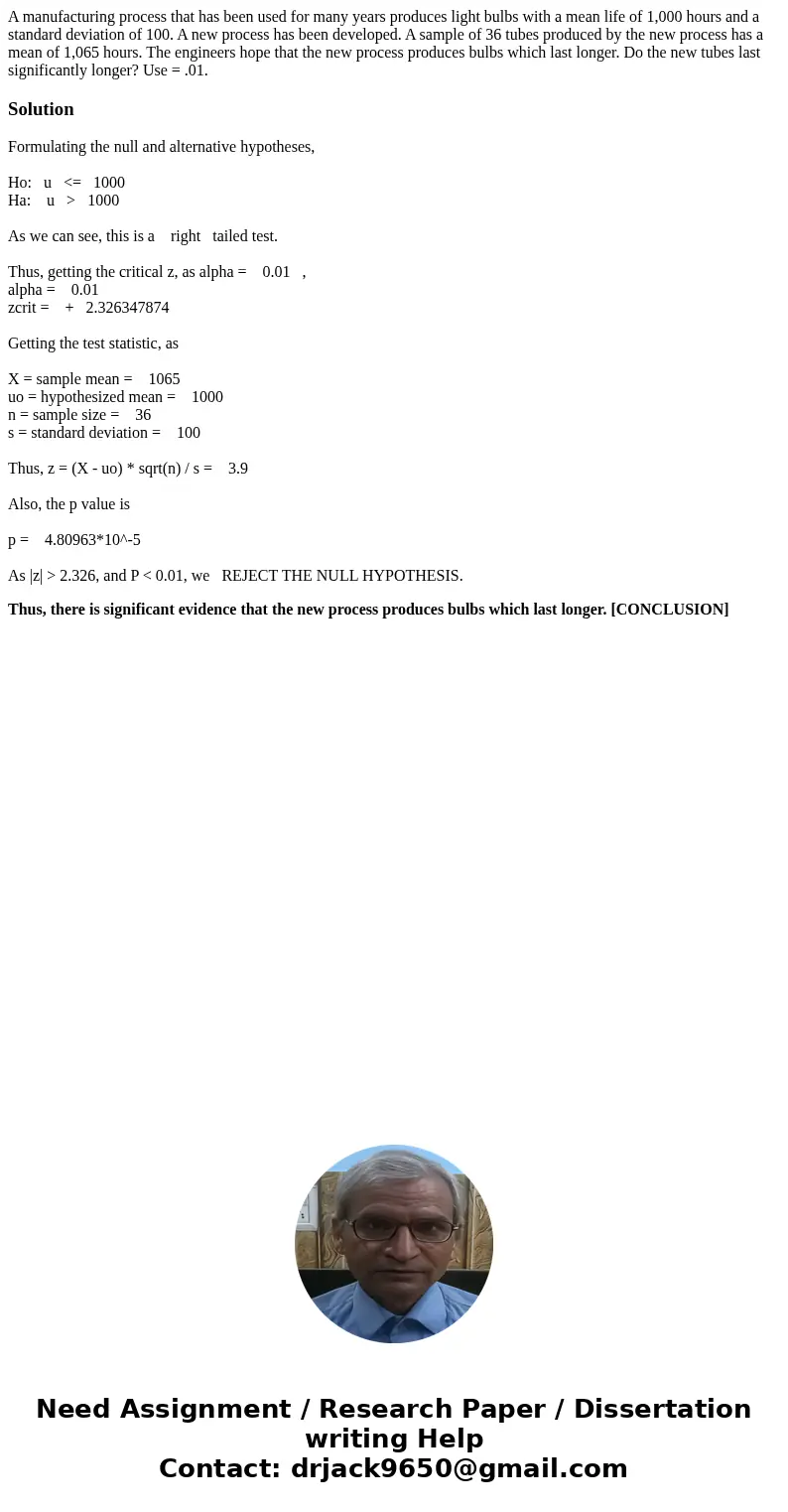A manufacturing process that has been used for many years pr
A manufacturing process that has been used for many years produces light bulbs with a mean life of 1,000 hours and a standard deviation of 100. A new process has been developed. A sample of 36 tubes produced by the new process has a mean of 1,065 hours. The engineers hope that the new process produces bulbs which last longer. Do the new tubes last significantly longer? Use = .01.
Solution
Formulating the null and alternative hypotheses,
Ho: u <= 1000
Ha: u > 1000
As we can see, this is a right tailed test.
Thus, getting the critical z, as alpha = 0.01 ,
alpha = 0.01
zcrit = + 2.326347874
Getting the test statistic, as
X = sample mean = 1065
uo = hypothesized mean = 1000
n = sample size = 36
s = standard deviation = 100
Thus, z = (X - uo) * sqrt(n) / s = 3.9
Also, the p value is
p = 4.80963*10^-5
As |z| > 2.326, and P < 0.01, we REJECT THE NULL HYPOTHESIS.
Thus, there is significant evidence that the new process produces bulbs which last longer. [CONCLUSION]

 Homework Sourse
Homework Sourse